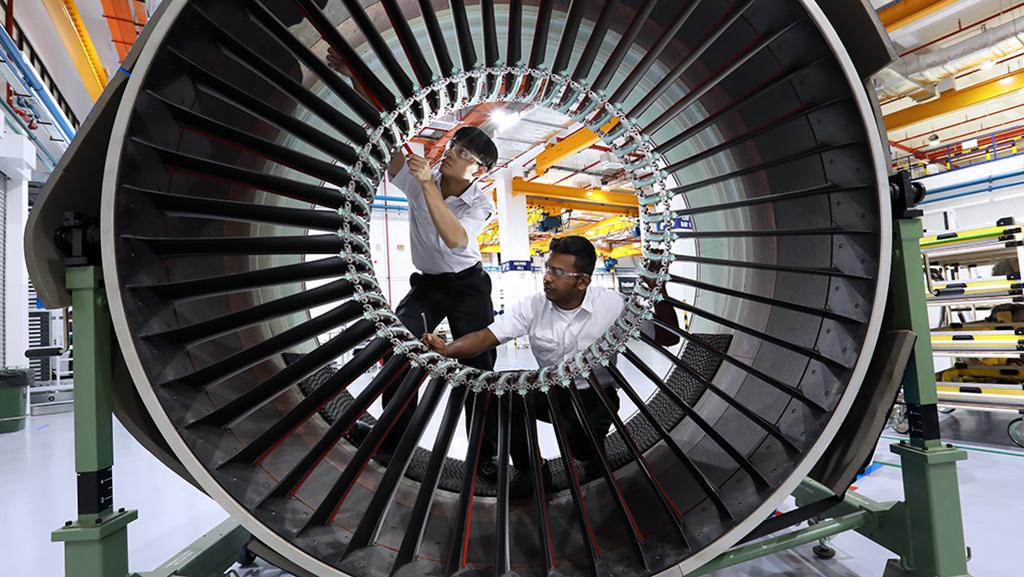
Another blow to the Pratt & Whitney geared turbofan (GTF) engine program came on Sept. 11, when parent company RTX (formerly Raytheon Technologies) detailed the extent of its fleet management program, which accelerated engine removals for inspection. Leaders say they completed a “holistic fleet management plan” that should take care of parts riddled with powdered metal problems during manufacturing, which can lead to cracks.
The financial impact to the PW1100 program will be $6-7 billion. The cost breaks down into two buckets, with about 80% being customer support—from the time an engine is taken off wing until it’s back on wing, plus operational disruption costs—and 20% for additional shop visits, mostly for labor and materials, says Neil Mitchill, RTX executive vice president and CFO.
This latest news identifies 600-700 engines needing removal from service by 2026, with most coming off wing between now and early 2024.
This group of engines will require three actions. First, high-pressure turbine (HPT) discs must be inspected between 2,800-3,800 cycles, depending on the engine’s thrust rating. Many engines are reaching this cycle limitation, “which is the driver behind the majority of the incremental removals in 2023 and 2024,” says Chris Calio, RTX president and COO. Second, part lives of compressor and turbine discs in this engine group will be reduced to 5,000-7,000 cycles. Lastly, high-pressure compressor (HPC) discs must be inspected.
These extra 600-700 removals “will obviously put additional pressure on the fleet” because the news comes at a time when about 10% of the fleet is already on the ground “because of high MRO turn times due to material constraints, which also results in longer times between engine removal and induction into our MRO shops,” says Calio.
Obviously, adding shop visits to an MRO network already stretched thin will “create more congestion in our MRO network,” he says, citing the OEM’s estimate of 250-300 days of downtime for each of these engines.
“As a result, we are now forecasting an average of 350 aircraft on the ground for the GTF-powered A320 fleet from 2024 through 2026, with a peak of 600-650 aircraft on the ground in the first half of 2024,” says Calio.
Because the affected parts were made before third-quarter 2021, when Pratt & Whitney improved the powder metal production process, company executives say it will be able to deliver new GTF engines to Airbus as planned, as well as planned spare engines. That puts the onus on the MRO side.
To alleviate this situation and provide engines able to meet their full certificated lives, the company plans to install new HPT and HPC discs when they come in for shop visits.
But to meet the MRO requirement, the key is “driving the industrial ramp needed for MRO output,” says Calio.
In an industry still hindered by parts availability, that isn’t going to be easy.
RTX’s GTF fleet management overall requires about 3,000 engines to be inspected.
Expect at least one service bulletin to come out in the next 60 days.
